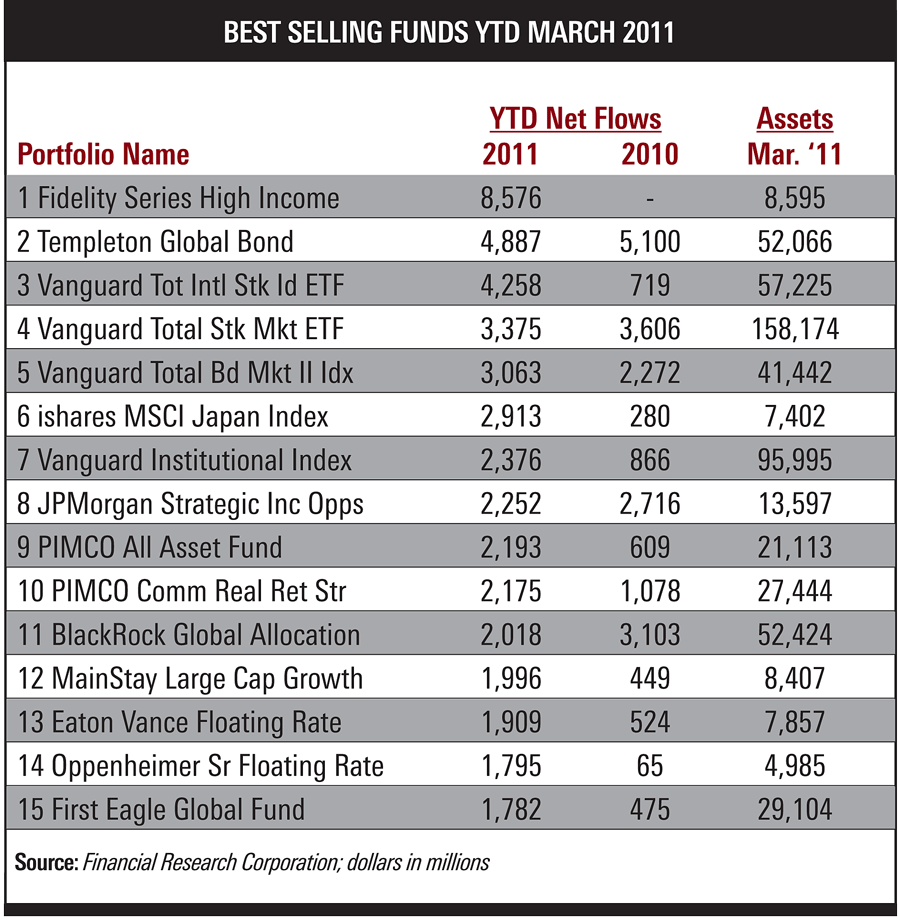Fund trends to watch in 2011 include the effect of low yields on money markets, target-date funds’ greater popularity and the ballooning of exchange-traded fund assets, says Lipper in a recently published report.
In “Trends Influencing the U.S. Fund Industry – 2011 Edition,” Lipper fiduciary research analyst Sasha Franger writes that three major developments will color the funds markets this year:
- Historically low yields will cause money market funds to suffer outflows
- Target-date funds will continue to grow in prominence
- Assets of exchange traded funds (ETFs), which totaled over $1.5 trillion as of year-end 2010, will continue to grow
“Low money market yields has been a persistent issue,” said Franger in a phone interview on Monday. “Recently, we’ve even seen some large players exiting money market funds.”
 In 2010, she noted, low yields also made the list of fund trends to watch in addition to management fee revenues and fast-growing equity fund classifications in commodities, natural resources and region-specific developing markets.
In 2010, she noted, low yields also made the list of fund trends to watch in addition to management fee revenues and fast-growing equity fund classifications in commodities, natural resources and region-specific developing markets.
Franger wrote the 2011 report in conjunction with the Lipper Fund Awards held in March.
According to Franger’s report, money market fund yields have fallen considerably from their 2007 high of 4.36%. In 2008, yields fell to 1.93%, and the decline continued in 2009 with yields falling to 0.12%. Most recently in 2010, money market fund yields were at a decade low of 0.01%.
“By the end of 2010, a number of mutual fund companies had decided to liquidate their money market funds due to these low yields. While money market fund flows have picked up a bit in 2011, money market funds will need to find a way to offer higher yields if they are going to attract more investors,” Franger writes.
Overall, open-end mutual fund assets reached their highest point at over $12 trillion in May 2008, according to the report from Lipper, a Thomson Reuters company. At that time, 59% of assets were in equity funds, 28% of assets were in money market funds and 13% of assets were in fixed income funds.
Less than a year later, mutual funds had lost over $3 trillion in assets, but by the end of 2010 assets surpassed their previous high in 2008, reaching a new high of $12.24 trillion. However, the asset composition of the mutual fund industry has changed with the economic








 May 09, 2011 at 11:15 AM
May 09, 2011 at 11:15 AM









